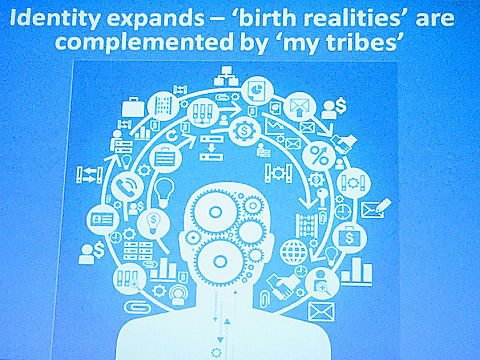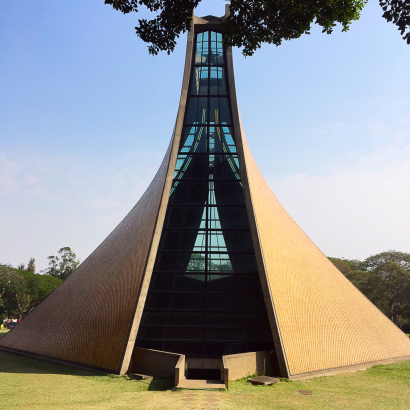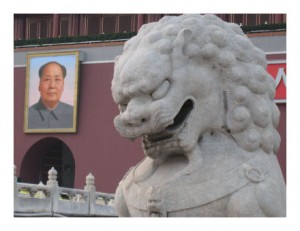GloCALL Conference
Daejeon, South Korea
13-14 November, 2015
After an absence of a couple of years, I was glad to be able to get back to the GloCALL Conference, which took place this year in Daejeon, South Korea. As usual, it brought together a wide range of CALL practitioners from around the country, the region, and further afield. Key themes included an emphasis on situated and contextual mobile learning; the development of students’ intercultural competence; and the development of students as autonomous learners able to make judicious use of self-study resources.
In her plenary, Running wild: Out-of-class mobile learning, Agnes Kukulska-Hulme mentioned some common characteristics which may apply to mobile learning: mobile, informal, serendipitous, incidental, experiential, rhizomatic, ubiquitous, contextual, situated, augmented, playful, social, seamless, and/or self-directed. She spoke in some detail about the MASELTOV Project, which has recently ended. It produced an integrated collection of smartphone tools for immigrants to Europe learning local languages. The target learners include those with a low level of education, with cultural backgrounds that differ greatly from the host countries, or who are isolated individuals. There are some issues around cost, surveillance and privacy. While the resources include useful language learning and translation tools, it is still hard to show gains in terms of social inclusion. Many of the key points are summarised in the Mobile Situated Language Learning report.
She also spoke about a related project called SALSA (Sensors and Apps for Languages in Smart Areas), which is designed for English language learners in Milton Keynes as part of a local smart city initiative. It relies on beacons placed around the city, which trigger location-relevant content sent through an app to mobile devices in the vicinity. Thus, the beacons trigger situated language learning lessons, which are also available later on the mobile devices. Place thereby becomes significant for learners, who are sensitised to learning resources around the city. This encourages learners to think about their learning strategies and to better identify their own needs.
Overall, there is a need to harmonise formal and informal learning; we need to understand informal learning better, and to connect it better to formal learning. Language may serve as a bridge connecting formal and informal learning through mobile devices.
In his presentation, Mapping the city: Map-based tools for language learning projects, Stephen Welsh spoke about new literacies, geolocation and language learning. Students can get out into the community outside the classroom, and connect their learning with the wider world. He spoke of the spatial turn in the humanities, and the recognition that spaces contain embedded stories. He also spoke of deep mapping, which is the concept of mapping rich, everyday stories to geographical locations. He suggested that using common platforms like Google Maps and Wikispaces, students can be encouraged to create multimedia materials linked to real-world locations. He showed an example of a global simulation project called Ma vie parisienne, where students create an imagined walk-through geography of Paris, with their texts attached to a map of the city. He also showed a free tool called Cityscape created in the Language Resource Center at Columbia University in the US, where students are able to add a wider range of resources to maps. He suggested that the following are fundamental instructional design principles for these types of student tasks:
- minimise student confusion
- provide ample technical orientation
- make objectives clear and manageable
- provide good models for student work
- get out of the way!
It’s also important to think about how structured or flexible the tasks should be, and whether they will be more instructor-centred or student-centred. Digital tools are needed for capturing, editing, hosting, geolocating, and sharing/reflecting on students’ work.
In their presentation, The complexities of digital storytelling: Factors affecting performance and production, Peter Gobel and Makimi Kano described a 6-month digital storytelling pilot project involving both group and individual storytelling. A more familiar or personal topic seemed to result in marginally better products. Students’ views of their own skills remained stable even as the project demands increased; there seemed little motivation to learn to use the technology better. In future, the presenters plan to experiment with interactive presentations, different formats (like movies, chat, and Google Maps), digital storytelling with mobile devices, and online peer review at each stage.
In my own presentation, Language and cultural exchange online: Lessons learned from running a Chinese-Australian digital storytelling project, I spoke about the successes and challenges of the Australia-China Council-funded Multimedia Stories for Language and Cultural Exchange project which ran in 2013-2014, highlighting the lessons learned by the project organisers in practical areas like motivation to participate, organisation and timetabling, and technology; and cultural areas like educational/school culture, and pedagogy.
In his presentation, Online social interaction: More interculturally aware and autonomous learners?, Pasi Puranen spoke about telecollaboration for autonomous learners in cultural exchanges. Telecollaboration takes learners outside textbooks, promotes critical awareness, and fosters awareness of cultural differences in communicative practices. Students can develop intercultural communicative competence, learning to interact with others who are linguistically and culturally different. He described a telecollaboration project where Finnish and Spanish students interacted with each other over 6 weeks on Facebook, working in English for 3 weeks and Spanish for 3 weeks. The project increased students’ motivation through dynamic interaction online, enhanced their understanding of each other’s cultures, and helped them become more autonomous learners.
In his presentation, The ICOSA Project – Creating interactive, integrated self-access English language exercises to enhance student learning while fostering inter-institutional collaboration, Mark LeBane spoke about the work of 5 Hong Kong higher education institutions in developing an indexed repository (known as ICOSA, i.e., Inter-university Collaborative Online Self-Access) of online self-access English language learning materials for students. He spoke about the need to guide students in finding their own resources for self-study, helping them to draw on the ICOSA repository as well as seeking other appropriate materials from the wider internet.
In his presentation, Learner training in mobile language learning, Glenn Stockwell pointed out that there is a large gap between students’ intended and actual uses of mobile devices for learning, and that technology by itself will never lead to autonomy, which is dependent on a combination of motivation and skills. Referring to the work of Phil Hubbard, he suggested that teachers need to operate within principles-based learning frameworks involving the following elements:
- experience CALL yourself
- give learners ‘teacher’ training
- use a cyclical training approach
- use collaborative debriefings
- teach general exploitation strategies
Referring to Romeo and Hubbard, he went on to say that we need to consider 3 domains of training:
- technical training (how to use technology), which is where most of our training is currently focused
- strategic training (what to do with the the technology specifically to learn a language)
- pedagogical training (why to do it)
He spoke about a 2-year study where technical and strategic training only were used in the first year, and technical, strategic and pedagogical training were all used in the second year. In the second year, students engaged in far more online learning activities, and used mobile phones for a much greater proportion of them. Students also became much more conscious of why they were making certain choices about using certain devices in certain ways. All in all, channels of communication were opened up between the teacher and the learners. Students took more responsibility for their own learning, and the teacher took on even more of a role as a motivator.
In her presentation, Exploring the concept of assistance in language learning, Agnes Kukulska-Hulme also focused on learner training, coupled with the notion of changing roles for teachers. Questions are now arising around configurations of human assistance combined with digital assistance through mobile devices like smartphones. After considering historical examples, she mentioned the development of a ‘mobile assistant’ in the MASELTOV project, which integrates a collection of tools and services including ways of finding local help, a social network, information resources, translation, a navigation guide, language learning guidance, and a serious game. These are all joined together by a recommender system which to some extent fills a traditional teacherly role, including the role of sequencing learning activities, as well as progress reporting. One challenge for language teachers is how to support students’ out-of-class language learning at a distance; another is how to support language learning in the age of digital assistants. She concluded with a list of different types of assistance that might be required by learners:
- motivation
- well-being support (including healthy studying)
- progress monitoring (including feedback)
- cognitive support (including noticing support, scaffolding and fading, and memorisation support)
- organisation (including preparation and reminders)
- individual requirements (including understanding individuals’ needs, e.g., for those with disabilities, and experience capture)
- enrichment (including providing real-world contexts for practice, and augmentation of experiences)
- direct help (including instruction, guidance, recommendations, and emergency help)
- sustained help (including learner training and habit formation)
- personal development (including support for imagination and creativity)
When we are developing new tools, we need to think about how these kinds of support can be built in, and how digital support can and should be balanced with teacher support. These are conversations that teachers need to be having with technology developers.
In her presentation, No more computer lab: Flipping your CALL classroom, Heyoung Kim explained that she has transferred lectures and readings to online-only sessions, complemented by online activities, leaving face-to-face class time free for in-depth discussions, group activities, and brief mobile-based reviewing of online resources. When working online, her students used Google Drive, and she was able to easily view their work folders. She reported that students were much more active in class because they were better prepared; task outcomes were better; students talked more in the classroom; and overall her classroom instruction was better organised and prepared. However, there was an increased preparation time involved in pre-recording lectures; an unfamiliar class sequence required lots of explanation; and there were technical problems with mobile quizzes and the learning management system (though Google Drive solved some of these problems). Some recycling of teaching materials should be possible in the future.
In the final plenary, Computer-assisted language learning: A reality check, Jeong-Bae Son noted that CALL is still not available in many schools, it is difficult to implement in many places, and there is a lack of teacher training in this area. He indicated that recent areas of particular focus in CALL are mobile learning and personalised learning. As more institutions move towards BYOD policies, there is a stronger connection between school learning and everyday life. There is also a broad move towards OERs, or Open Educational Resources, which are free and accessible to everyone. CALL, he suggested, can cover CMC (computer-mediated communication), WBLL (web-based language learning) and MALL (mobile-assisted language learning).
As always, GloCALL offered an eye-opening opportunity to pick up on the latest themes in CALL and MALL as they’re emerging from the practices and research of language teachers and learners around Asia and the world. It was interesting to have these conversations in the context of the country with the fastest broadband in the world. In fact, I’m typing the conclusion to this blog entry on the KTX train up to Seoul, and will shortly update it online thanks to the freely available wifi on the train … This, surely, is a glimpse of the future of internet connectivity around the world!














